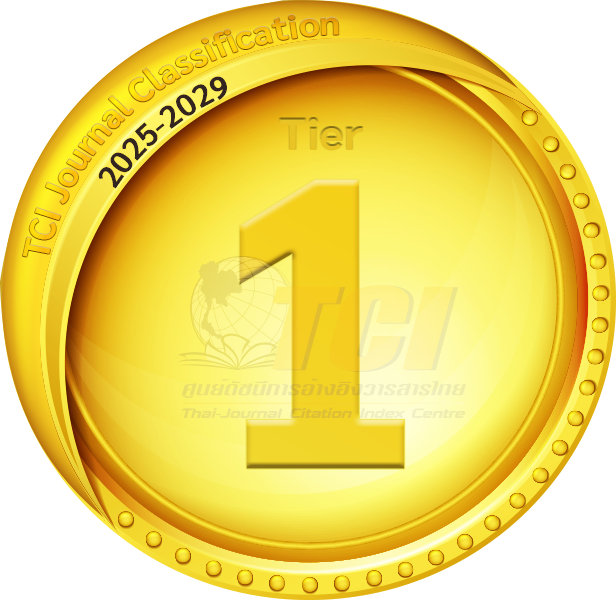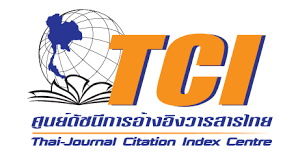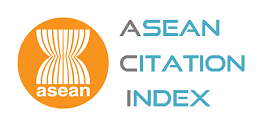Research Hotspots and Trends in Monuments and Memorials: Visual Analysis Based on Knowledge Graph
- Guoxing Chen, Faculty of Decorative Arts, Silpakorn University, Bangkok, Thailand & College of Fine Arts, Guangdong Polytechnic Normal University, Guangzhou, China, *Corresponding author, E-mail: chenguoxing@gpnu.edu.cn
- Vanvipha Suneta, Faculty of Decorative Arts, Silpakorn University, Bangkok, Thailand
Abstract
Monuments and memorials have been extensively researched in recent decades, and this overall upward trend is continuing. Effectively identifying the frontier hotspots of this research topic and predicting the future development trend is significant. Using the visualization software CiteSpace, this study analyzes the relevant literature on CNKI and WOS databases from 2012 to 2021. The results reveal the following: (1) The main current themes of the monument and memorial research can be divided into four parts, namely “basic theory, technology, and method”, “history, memory, and commemoration”, “type of remains, heritage, and dark tourism”, and “space environment and art”. (2) The relevant themes can be summarized in the evolutionary path of three research directions: “history, memory, and commemoration of the monument and memorials”, “tourism development and preservation and/or conservation of monuments and memorials”, “artistic design of the space environment of the monuments and memorial”. (3) The cross-border disciplines and fields, improvement of basic theory, innovation of technology and methods, and development and criticism of “counter-monuments and anti-memorials” are important concerns for future research on this topic.
Keywords: Monument, Memorial, CiteSpace, Research hotspots, Research theme
DOI: 10.14456/jcsh.2023.4
References
Alings, R. (1996). Monument und nation: Das bild vom nationalstaat im medium denkmal - zum verhältnis von nation und staat im deutschen kaiserreich 1871-1918. Berlin, Germany: De Gruyter.
Buccolieri, A., Buccolieri, G., Castellano, A., & Marabelli, M. (2016). X-ray fluorescence for the study of the patinas on an outdoor bronze monument. International Journal of Conservation Science, 7(4), 1009-1022. https://doi.org/10.3390/heritage4040170
Dimitrovski, D., Senić V., Marić D., & Marinković V. (2017).Commemorative events at destination memorials - a dark (heritage) tourism context. International Journal of Heritage Studies, 23(8), 695-708. https://doi.org/10.1080/13527258.2017.1317645
Farrelly, F. (2019).Revealing the memorial experience through the tourist-led construction of imagined communities. Tourism Management, 75(12), 13-21. https://doi.org/10.1016/j.tourman.2019.04.031
Foley, M., & Lennon, J. J. (1996). JFK and dark tourism: A fascination with assassination. International Journal of Heritage Studies, 2 (4), 198-211. https://doi.org/10.1080/13527259608722175
Gizzi, F. T., Sileo, M., Biscione, M., Danese, M., & de Buergo, M.A. (2016). The conservation state of the Sassi of Matera site (Southern Italy) and its correlation with the environmental conditions analysed through spatial analysis techniques. Journal of Cultural Heritage, 17, 61-74. https://doi.org/10.1016/j.culher.2015.05.002
Golańska, D. (2015). Affective spaces, sensuous engagements: in quest of a synaesthetic approach to ‘dark memorials’. International Journal of Heritage Studies, 21(8), 773-790. https://doi.org/10.1080/13527258.2015.1020960
Huyssen, A. (1984). Mapping the postmodern. New German Critique, 33, 5-52. https://doi.org/10.2307/488352
Lennon, J. J., & Foley, M. (2001). Dark tourism: The attraction of death and disaster. Massachusetts, US: Cengage.
Li, J.Q. (2021). Monumental sculpture and the spirit of the times: An example of the history of western fine art. Art Magazine, 9, 12-16+21. https://doi.org/10.13864/j.cnki.cn11-1311/j.006487
Lin, H.-W., & Fu, C.-C. (2007).A study on the differences between the significance of war memorial: Based on the purpose of monuments erected in Kinmen and Gettysburg, U.S.A. Journal of Architecture, 62(12), 23-48.
Lu, D. (2021). Monument de jinianbei hanyi jiqi dui buke yidong wenhua yichan baohu de yingxiang [The monument meaning of monument and its impact on the protection of immovable cultural heritage]. China Cultural Heritage, 3, 33-44.
Nora, P. (1989). Between memory and history: Les lieux de mémoire. Representations, 26, 7-24. https://doi.org/10.2307/2928520
Nora, P. (2020). Field of memory: Cultural and social history of french national consciousness. Nanjing University Press.
Panou, C., Ragia, L., Dimelli, D., & Mania, K. (2018, Mar 17-19). Outdoors mobile augmented reality application visualizing 3D reconstructed historical monuments. In 4th International Conference on Geographical Information Systems Theory, Applications and Management (GISTAM), Funchal, Portugal.
Pironti, C., Ricciardi, M., Proto, A., Cucciniello, R., Fiorentino, A., Fiorillo, R., & Motta, O. (2022). New analytical approach to monitoring air quality in historical monuments through the isotopic ratio of CO2. Environmental Science and Pollution Research International, 29(20), 29385-29390. https://doi.org/ 10.1007/s11356-020-12215-8
Qin, X. N., Lu, X. L., & Wu, C. Y. (2014). The knowledge mapping of domestic ecological security research: Bibliometric analysis based on CiteSpace. Acta Ecologica Sinica, 34(13), 3693-3703.
Riegl, A. (1981). Der moderne denkmalkultus: Sein wesen und seine entstehung. Universitats-Bibliothek, Germany.
Savenije, G. M., & de Bruijn, P. (2017). Historical empathy in a museum: Uniting contextualisation and emotional engagement. International Journal of Heritage Studies, 23(9), 832-845. https://doi.org/10.1080/13527258.2017.1339108
Schütz, M. (2020). Rewriting colonial heritage in Bristol and Marseille: Contemporary artworks as decolonial interventions. Heritage and Society, 13(1-2), 53-74. https://doi.org/10.1080/2159032X.2021.1914298
Solso, R. L. (2000).Cognitive psychology. Boston, US: Allyn & Bacon.
Stańczyk, E. (2013). Remaking national identity: Two contested monuments in post-communist Poland. Central Europe, 11(2), 127-142. https://doi.org/10.1179/1479096313Z.00000000015
Tan, Y. L. (2021). Emergence and exploration of abstract monumental sculpture. Art Magazine, 9, 17-21. https://doi.org/10.13864/j.cnki.cn11-1311/j.006488
Wakao, Y., & Wada, M. (2010). Rekishi no ba: Shiseki, kinenhi, kioku. Kyoto, Japan: Mineruva Shobō.
Welch, M. (2016). Political imprisonment and the sanctity of death: Performing heritage in “troubled” Ireland. International Journal of Heritage Studies, 22 (9), 664-678. https://doi.org/10.1080/13527258.2016.1184702
Yang, Z. (2013). Jinianbei de liuzhong xinjianfa Deguo gonggong yishujia Jochen Gerz jieshao chang [The six new construction methods of monument German public artist Jochen Gerz introduction course]. Sculpture, 4, 74-75.
Yoon, T. H. (2019). Decoding dictatorial statues. Onomatopee.
Zhang, E. X., Tan, Y., Zhang, W., & Qin, X. N. (2021). Research hotspots and trends of domestic ecotourism economy: Visualization analysis based on knowledge map. Ecological Economy, 37(06), 124-133.
Zhao, B., & Huang, X. (2020). Encrypted monument: The birth of crypto place on the blockchain. Geoforum, 116, 149-152. https://doi.org/10.1016/j.geoforum.2020.08.011

Indexed in


Search